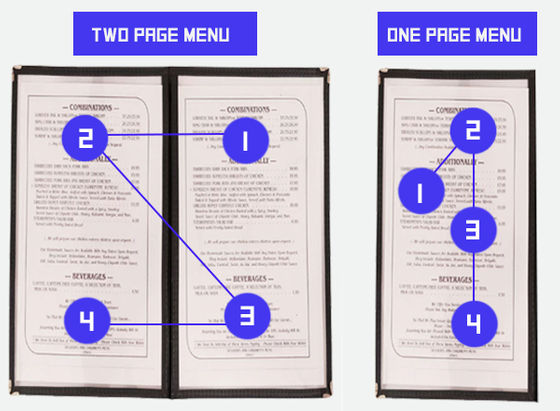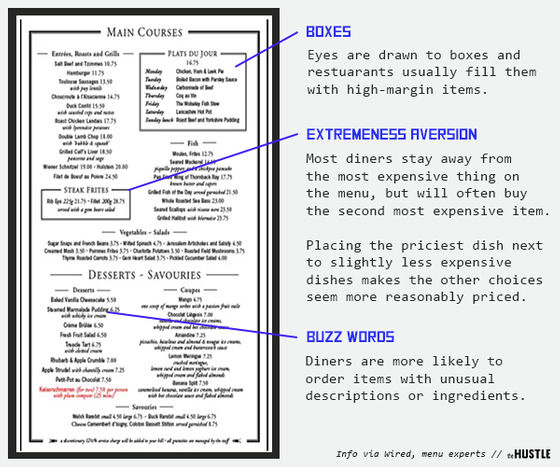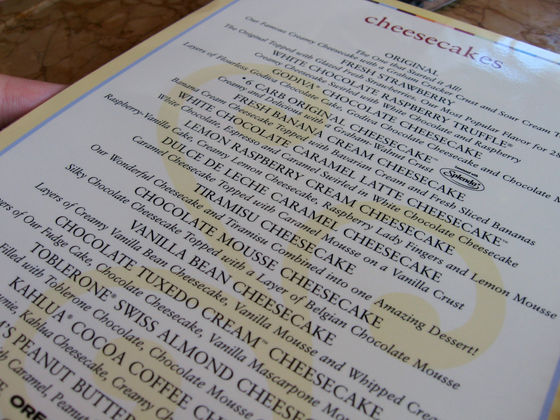'Menu specialist designer' explains how to make a menu table that will increase restaurant sales

Many restaurants have been forced to recreate the menu table due to changes in the handling menu due to the influence of the new coronavirus infection. The Hustle, a news site that deals with business information, has summarized the 'points of menu design' that experts who are involved in the design of menu tables for restaurants talk about.
Meet the 'menu engineers' who optimize restaurant revenue
“In the past, the design of the menu was unheard of,” says Michel Benes, owner of Menu Men , a consulting firm founded in 1968 that specializes in menu tables. In 2006, Benes, who took over the company from its founder and grandfather, Walter Baker, has focused on developing menu designs with a psychological approach.

One of the points that Mr. Benes emphasizes most in the menu design is 'the movement of the eyes of the customer who reads the menu.' According to Benesh, in the case of a two-page menu, as shown on the left side of the image below, guests move their eyes in the order of an 'inverted Z' from the top right. On the other hand, in the case of the one-page menu, the customer first looks at the position about a quarter from the top, and then from the top to the bottom. By grasping the movement of this line of sight, it is possible to take measures such as 'list the dishes with high profit margins in the places where it is easy to find the first place'.

Benes also said that he was able to get the second-highest dish by placing a box that attracts attention to the dish he wants to sell and placing the second-highest dish in the immediate vicinity of the highest dish. I also use a trick that makes me think.

In addition, you can raise the profit margin further by incorporating the following ideas.
・The words “special”, “originator”, “famous”, etc., are interwoven into the description of dishes with high profit margins to enhance the impression.
-Remove the '$ (dollar)' notation from the price notation. According to Benesch, customers can accept more spending by making them look like numbers, not prices.
・Limit the number of dishes on the menu to a specific number, such as '6 types of dishes for low-priced restaurants' '7 types of appetizers and 10 types of main dishes for high-end restaurants'. It was Professor John Edwards of the University of Bournemouth, England who discovered this particular number. According to a
・Keep in mind 'large fonts' and 'margin is 20% or less'.
Another menu expert designer interviewed by The Hustle is Greg Lap. For 38 years, he has worked on hundreds of restaurant menus and is called a 'menu engineer' who is familiar with menu engineering , an academic discipline whose subject is menu design.

Lap says the point of the menu design is 'to place decoy products and throw dopamine into the brain.'
'Decoy products,' Lap said, are products that are exaggerated at first glance, or are too expensive to offer, but they are exciting to look at. An example is the $1000 (about 100,000 yen) Golden Opulence Sundae that New York's famous sweets store Serendipity 3 announced in 2017 and became a hot topic.
According to Lap, many menus are made with the aim of making them easier to read and understand, but there are also strategies to make them difficult to read. For example, the 12-page menu of Cheesecake Factory , an American cheesecake specialty store, is filled with flashy photos and ugly price lists that can be described as 'a hell picture of a font.'

by Marcin Wichary
In this way, customers who are overwhelmed by the huge and hard-to-see menus simply ask the clerk for help. Therefore, it seems that the aim of this menu is to improve sales by recommending high-priced products without delay.
In addition, in recent years, unlike ordinary menus made of paper, restaurants that place QR codes read on smartphones instead of menus have also appeared. According to Benes, who quickly started developing menu designs to read on smartphones, the principle is to make the font sizes the same on paper menus, whereas for smartphone menus, increase the font size of the product you want to emphasize by 2 points. It seems that a different design than before is required.
'We are in an uncharted territory. The old psychological approach no longer applies,' Benesh said of the new menu design challenge.
Related Posts:







